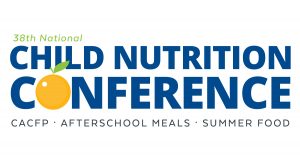NCNC Virtual 2024
Navigating Special Diets ($)
Allergies, intolerances, and sensitivities. What is the difference between the three? Learn how to navigate proper documentation, communication, and compliance to foster a safe environment for children with special dietary needs and requests.
Read MoreGrowing Healthy Foundations: Farm to ECE Made Easy ($)
Farm to Early Care and Education (ECE) is not limited to traditional farming practices but includes everyday tasks that contribute to children’s learning and development. Explore how simple actions, like buying local produce and promoting healthy eating, align with learning standards for children aged 0-5. Discover how you may already be integrating Farm to ECE into your daily routine.
Read MoreCompliance with Confidence: Sponsor Monitoring & Oversight ($)
Efficient program monitoring and oversight are essential in the CACFP and for ensuring the success of your organization. Discover best practices and opportunities of how to conduct reviews that not only meet program requirements, but also support and lift up the child care provider. Expand your understanding of effective oversight and ensure program compliance with confidence. 1. Identify CACFP monitoring requirements. 2. Explore why oversight matters and how it impacts your program. 3. Provide constructive technical assistance at review.
Read MoreBeyond Beginners: Next Level Menu Planning ($)
Navigating the complexities of developing a CACFP menu can often be overwhelming and confusing. What crucial information should you include on the menu to be in compliance? Do you include ounce equivalency, serving size, or both? Moreover, are there specific documents you should maintain while planning your menu? Learn how to create menus stress-free while meeting CACFP requirements.
Read MoreArtificial Intelligence for Child Nutrition ($)
Have you heard about Artificial Intelligence, but are unsure where to begin or how it could be beneficial to your program? Discover the basics of large language models (LLMs), like ChatGPT, and how you can use them in your current role within child nutrition settings
Read MoreTaking a Bilateral Approach to Self-Care ($)
It’s easy for providers to put the needs of the children they care for ahead of their own well-being. However, it is essential for them to prioritize their own mental and physical health in order to provide the best care for those they serve. Learn how to incorporate self-care into your daily routine to improve overall selfwellness.
Read MoreProcurement Standards for Sponsors & Centers ($)
All federal Child Nutrition Programs, including CACFP, must follow federal “procurement” (or purchasing) requirements. Learn the purpose of these regulations and how to implement them as part of your CACFP food buying practices. The USDA Farm to School Team will also focus on how to properly buy local in compliance with federal requirements.
Read MoreChildhood Obesity Prevention & Early Nutrition Education ($)
Receiving nutritious meals early in life, as well as being physically active, is critical to the establishment of positive lifelong habits. Discover how teaching children about healthy eating from a young age can positively impact their cognitive, emotional, and physical development to help prevent childhood obesity.
Read MoreA Fresh Perspective: Embracing New Foods ($)
CACFP providers have the ultimate opportunity to introduce unique and healthy foods to children in their care. Learn how adults can create environments where children are receptive to trying new fruits and vegetables. Uncover a fresh perspective to make mealtimes even healthier for children. 1. Identify strategies to expand adults’ mindsets about children’s food preferences. 2. Discover engaging activities to experiment with new foods. 3. Explore resource documents for creative and compliant menu ideas.
Read MoreSFSP Overview ($)
Don’t know what SFSP even means? Are you brand new to child nutrition food programs? Do you run one program and are thinking about sponsoring another? Learn how this food program provides healthy food access for children in child care, afterschool, out-of-school time and during summer.
Read More
